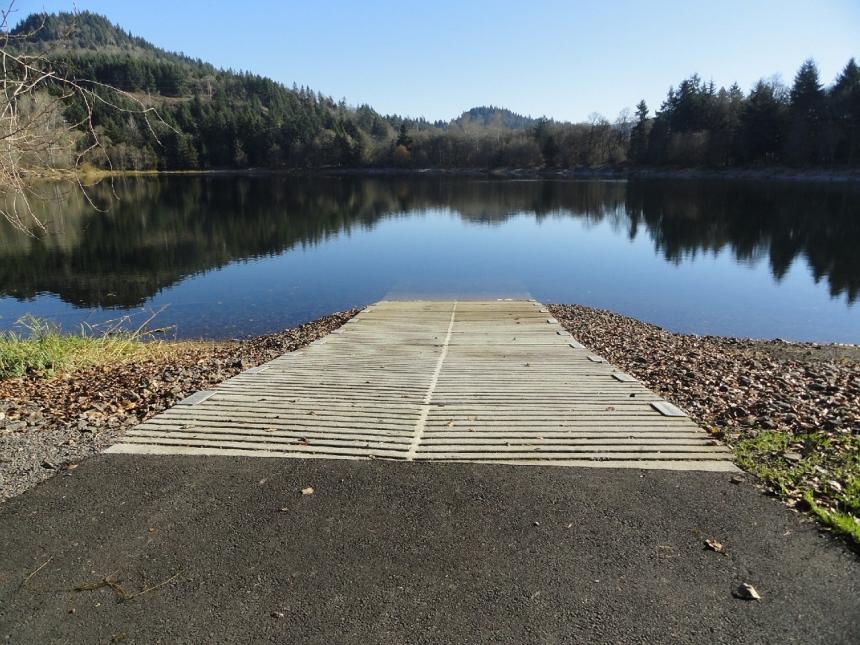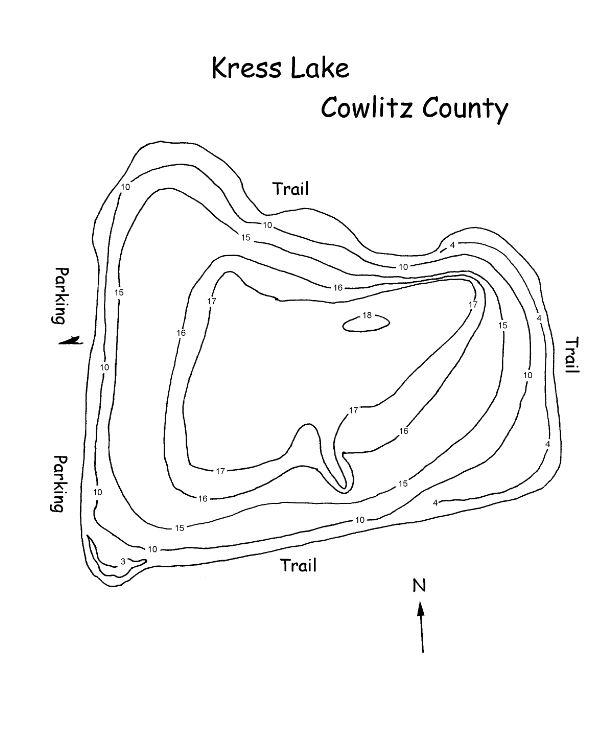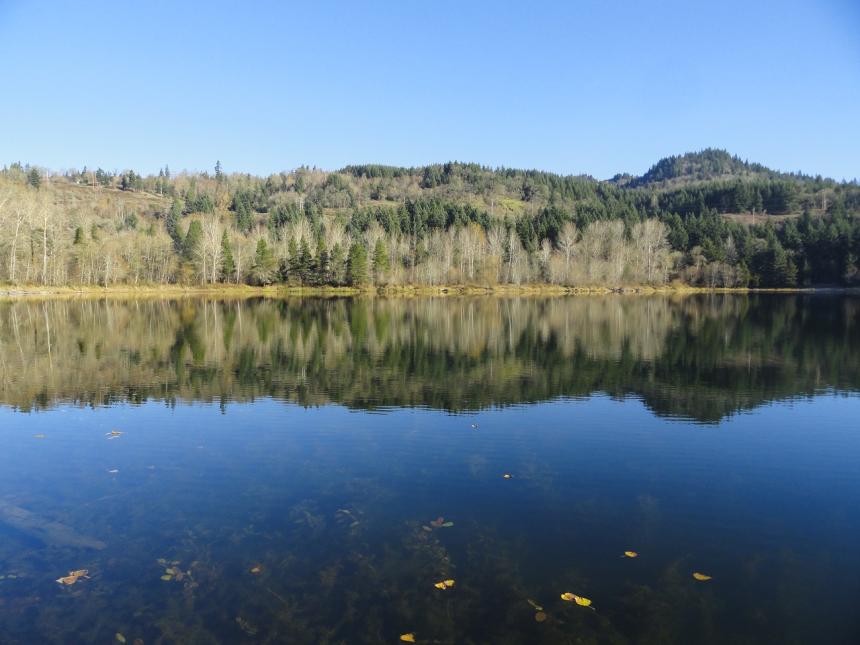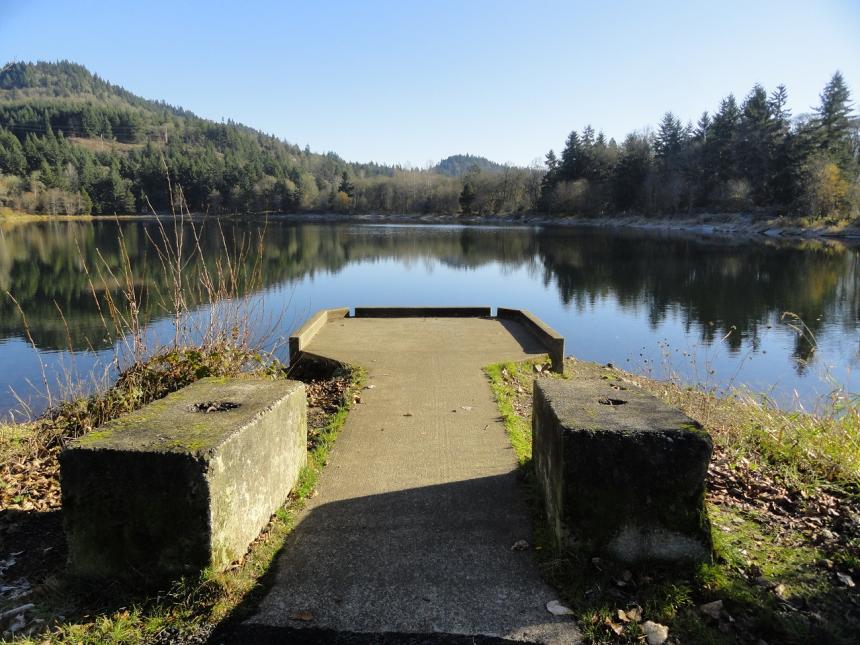2025 Trout Derby
2 prizes are waiting to be claimed!
Prizes already claimed here:- GIFT CARD
- GIFT CARD
- MICS TACKLE
- KUNNAN ROD&REEL/TACKLE
- TACKLE BOX W/TACKLE
- One Day Pass
- 1/2 DAY POND PROWLER RENTAL
Catch a tagged fish? Fill out the
prize claim form.
Forget where to collect your prize? Recover your prize details.
Kress Lake Access Area will close June 16, 2025 for watermilfoil treatment. The access area will reopen on June 17. Refer to our news release for more information.
Kress Lake is an old gravel pit acquired by Washington Department of Fish and Wildlife in 1981. It is a popular trout and warmwater fish lake.
Catchable Rainbow Trout and Brown Trout are planted from January to May and then again in November. Channel Catfish were first planted in 1998. There are plans for future stockings as of 2024. Surplus adult hatchery Steelhead are occasionally also planted throughout the fall and winter.
The pond was treated for invasive Eurasian Milfoil and has greatly improved fishing conditions.
This lake provides an excellent trout fishing opportunity from late fall through late spring. There is some bank access with a trail going around the entire lake.
Gasoline motors are not allowed.
Two-pole fishing is allowed
Shoreline access: Good - Good shore access for walking.
Species you might catch
- Black crappie
- Bluegill
- Brown bullhead
- Channel catfish
- Common carp
- Largemouth bass
- Pumpkinseed Sunfish
- Rainbow trout
- Steelhead
- Warmouth
- Brown trout
Lake information
County: Cowlitz
Acreage: 24.60 ac.
Elevation: 18 ft.
Center: 46.04705, -122.850953
Open in Google Maps
Catchable fish plants
| Stock Date | Species | Number Released | Number of Fish Per Pound | Facility |
|---|---|---|---|---|
Visit the Catchable Trout Plants page for a more detailed search of trout plants in this or other bodies of water. To view or download the source data for this table visit the WDFW Fish Plants dataset on the Washington State Open Data Portal
Fishing prospects calendar
Rainbow trout
Largemouth bass
Black crappie
Bluegill
Pumpkinseed Sunfish
Channel catfish
Brown bullhead
Photos



